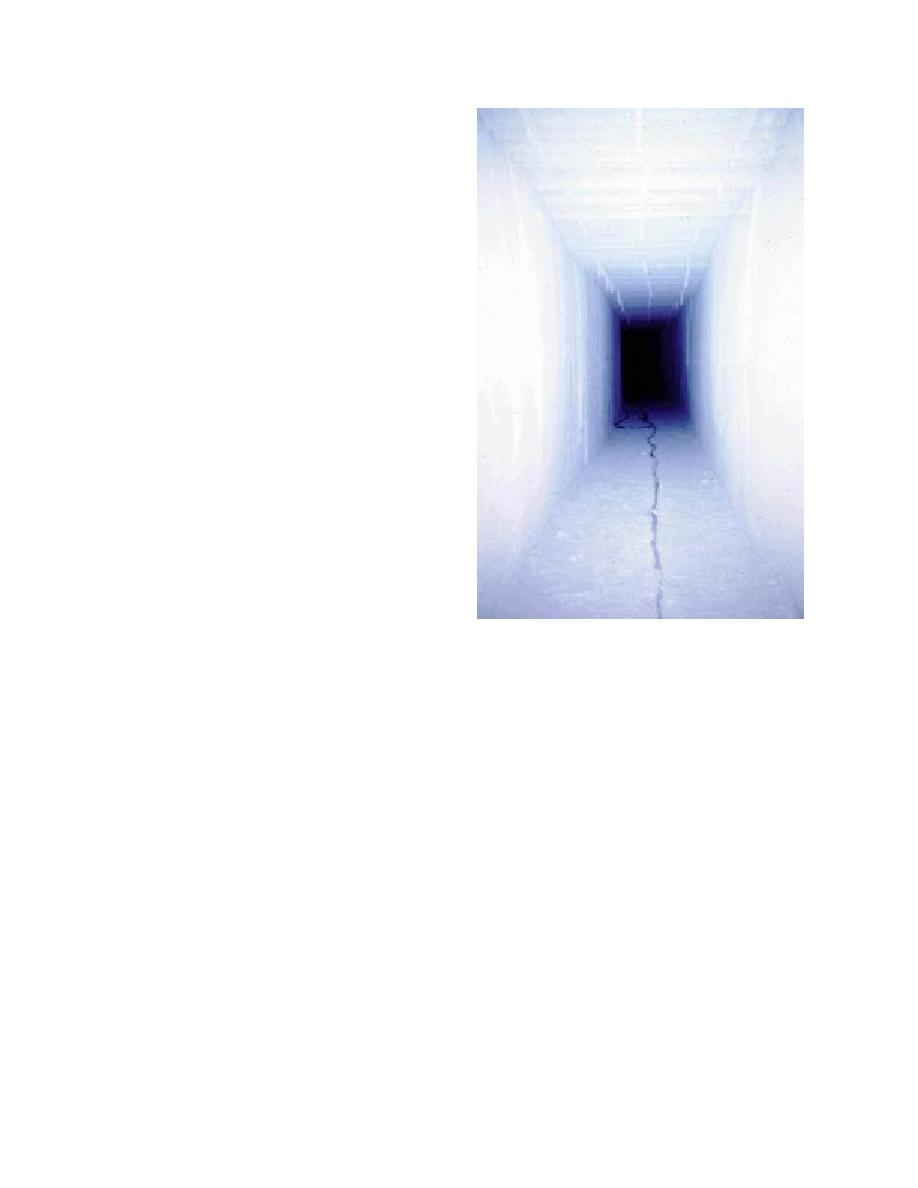
Warm-up of the drill also proved critical. The
drill has a large hydraulic reservoir with under-
sized heaters, and starting the drill is very diffi-
cult. If the drill is operated with cold oil, frothing
occurs as the drill rotation and lift/lower hydrau-
lic motors will cause air entrainment. Special care
must be exercised with this equipment, as it is very
dangerous and difficult to operate, especially
when cold.
Two more sets of vertical holes were drilled over
the course of the 116-m tunnel before reaching the
stopping point as determined by the facilities con-
tractor at the Pole. Because of the thinning of the
overburden, the last 9 m of the tunnel was con-
structed using the cut-and-cover method.After
replacing the pump, only minor problems were
encountered with the equipment. The systemic
problems, such as the blower motor tripping and
the faulty tunneler controls, continued to plague
operations but were worked around, albeit at a
cost to productivity. Surveying errors and misin-
terpretation of the tilt sensor data led to a very
interesting tunnel, not very straight but clean. The
slope problem was partially compensated for in
the last 30 m of the tunnel, the difference to be
made up with cribbing of the pipe to be installed.
Additional flexible expansion joints would be
needed to work around the straightness problem.
In the end, the tunnel was about 1.5 m off center
Figure 21. Finished tunnel (December 1997).
and 30 cm lower than planned.
The tunnel was completed on 3 December, the
original target date (Fig. 21). To do this, we ran
two shifts the last seven days, working 12- to 20-
hour days in wind chills as low as 80C. We of-
est cost method of completing the work. The su-
ten ran the equipment with only a crew of two, as
perior facilities, availability of specialized support
manpower requirements on station did not allow
personnel, on-site power, and spacious work area
assistance from the facilities contractor most days.
(compared to the Pole) were all advantages.
Overall production was only a little over 1 m/hr,
Conversations with the blower manufacturer
a painfully slow progression compared to what
after the tunneling effort had uncovered two sys-
we expected from the equipment. However, oper-
tem design flaws. The first was the way the chips
ating the system for this extended period of time
were introduced into the airstream. Before modi-
under actual conditions allowed us to examine the
fication, the air and chips were taken up through
weak points and develop proposed solutions for
the same orifice, the impeller opening and chute
the next deployment.
of the snowblower. The manufacturer recom-
mended that the chips be introduced into an es-
tablished airstream. The elbow above the snow-
Modifications deployment (199798 season)
In January of 1998, two CRREL personnel re-
blower was thus modified into a wye, with the
turned to Antarctica to implement modifications
impeller throwing the chips into the airstream
to the equipment developed as a result of the No-
originating at the open leg of the wye. The second
vember 1996 deployment. The tunneler, duct as-
problem was at the blower end, where the chips
traveled up the vertical piping, through a 90 bend,
semblies, and vertical tubing were shipped from
the Pole to McMurdo where the work was per-
and directly into the blower. The centrifugal force
formed. Deploying to McMurdo was chosen from
acting on the mixed flow stream through the bend
a list of alternatives as the most expeditious, low-
causes consolidation of the solids and thus com-
19



 Previous Page
Previous Page
